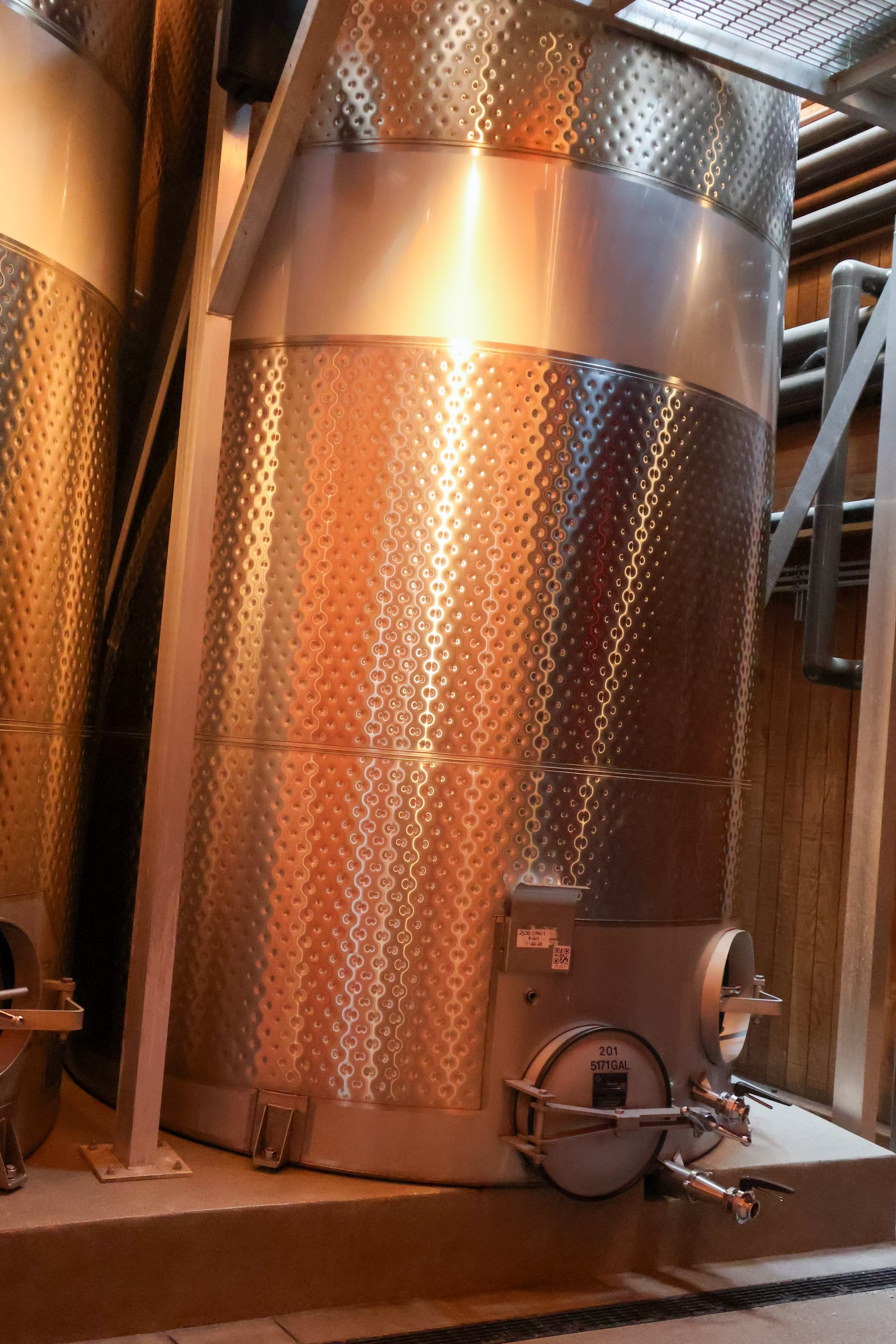What is Fermentation?
Fermentation is a metabolic process that converts sugar to acids, gases, or alcohol. It occurs in yeast and bacteria, as well as in oxygen-starved muscle cells, as in the case of lactic acid fermentation. The science of fermentation is known as zymology. There are two main types of fermentation: aerobic and anaerobic fermentation processes.
The Basics of Aerobic Fermentation
Aerobic fermentation is a type of fermentation that occurs in the presence of oxygen. It involves the breakdown of glucose (sugar) through the glycolysis pathway, resulting in the production of pyruvate. The pyruvate then enters the citric acid cycle (Krebs cycle), where it is further oxidized to produce carbon dioxide, water, and ATP (adenosine triphosphate), which is the main energy currency of the cell.
Key Features of Aerobic Fermentation
- Oxygen Requirement: Aerobic fermentation requires oxygen to proceed. The presence of oxygen allows for the complete oxidation of glucose, resulting in a higher yield of ATP compared to anaerobic fermentation.
- End Products: Aerobic fermentation produces carbon dioxide and water as its end products. The process is highly efficient in producing energy.
- Applications: Aerobic fermentation is commonly used in the production of biomass, antibiotics, and enzymes. It is also a key process in aerobic wastewater treatment systems.
Understanding Anaerobic Fermentation
Anaerobic fermentation, on the other hand, occurs in the absence of oxygen. In this process, glucose is partially broken down to produce pyruvate through glycolysis. Still, instead of entering the citric acid cycle, the pyruvate is converted into various end products such as ethanol, lactic acid, or other organic acids, depending on the type of microorganism involved.
Key Features of Anaerobic Fermentation
- Lack of Oxygen Requirement: Anaerobic fermentation does not require oxygen. In fact, the presence of oxygen can inhibit the fermentation process.
- End Products: The end products of anaerobic fermentation vary widely and can include ethanol, lactic acid, acetic acid, and methane. The specific end product depends on the type of microorganism and the conditions of the fermentation process.
- Applications: Anaerobic fermentation is widely used in the production of alcoholic beverages, bread, yogurt, and biofuels. It is also a crucial process in anaerobic digestion systems used for waste treatment and biogas production.
Comparing Aerobic and Anaerobic Fermentation
Efficiency of ATP Production
One of the main differences between aerobic and anaerobic fermentation processes is the efficiency of ATP production. Aerobic fermentation is much more efficient, producing up to 38 molecules of ATP per molecule of glucose, while anaerobic fermentation produces only two molecules of ATP per molecule of glucose. This significant difference in energy yield is due to the complete oxidation of glucose in the presence of oxygen during aerobic fermentation.
End Products and Their Uses
The end products of fermentation also differ significantly between the two processes. Aerobic fermentation results in carbon dioxide and water, which are less commercially valuable compared to the diverse range of organic compounds produced through anaerobic fermentation. For instance, ethanol produced via anaerobic fermentation is a key component in alcoholic beverages and biofuels, while lactic acid is used in the food industry and in biodegradable plastics.
Microbial Involvement
The types of microorganisms involved in aerobic and anaerobic fermentation also differ. Aerobic bacteria and fungi, such as Aspergillus and Penicillium species typically carry out aerobic fermentation. Anaerobic fermentation, on the other hand, involves a wide range of anaerobic microorganisms, including yeast (Saccharomyces cerevisiae), lactic acid bacteria (Lactobacillus species), and methanogenic archaea.
Applications of Aerobic Fermentation
Industrial Production of Biomass
Aerobic fermentation is extensively used in the industrial production of microbial biomass. This biomass can be used as a protein source in animal feed, human food supplements, and for the extraction of valuable biochemicals. For example, Saccharomyces cerevisiae, commonly known as baker’s yeast, is produced through aerobic fermentation for use in baking and brewing industries.
Antibiotic Production
Many antibiotics are produced through aerobic fermentation. Penicillin, for example, is produced by the aerobic fungus Penicillium chrysogenum. The presence of oxygen is essential for the fungus’s growth and the production of the antibiotic compound.
Wastewater Treatment
Aerobic fermentation is a key process in the treatment of wastewater. In aerobic wastewater treatment systems, microorganisms break down organic matter in the presence of oxygen, resulting in the production of carbon dioxide, water, and biomass. This process is highly effective in reducing the biological oxygen demand (BOD) of wastewater, making it safe for discharge into the environment.
Applications of Anaerobic Fermentation
Alcoholic Beverage Production
Anaerobic fermentation is crucial in the production of alcoholic beverages such as beer, wine, and spirits. During the fermentation process, yeast converts sugars present in the raw materials into ethanol and carbon dioxide. The absence of oxygen ensures that the yeast carries out anaerobic fermentation, producing the desired alcoholic content.
Dairy Products
Lactic acid bacteria play a vital role in the anaerobic fermentation of dairy products such as yogurt, cheese, and sour cream. These bacteria ferment lactose, the sugar present in milk, to produce lactic acid, which acts as a preservative and gives the products their characteristic tangy flavor.
Biofuel Production
Anaerobic fermentation is also used in the production of biofuels. For instance, the anaerobic fermentation of biomass by certain bacteria produces biogas, a mixture of methane and carbon dioxide. Biogas can be used as a renewable energy source for heating, electricity generation, and as a vehicle fuel.
Waste Treatment and Biogas Production
Anaerobic digestion is a widely used method for treating organic waste. In anaerobic digesters, microorganisms break down organic matter in the absence of oxygen, producing biogas and a nutrient-rich digestate. The biogas can be captured and used as a source of renewable energy, while the digestate can be used as a fertilizer.
Factors Influencing Fermentation Processes
Temperature
Temperature is a critical factor in both aerobic and anaerobic fermentation processes. Each microorganism has an optimal temperature range for growth and metabolic activity. For example, yeast used in alcoholic fermentation typically performs best at temperatures between 20 °C and 30°C, while thermophilic bacteria involved in anaerobic digestion thrive at temperatures around 55°C.
pH Levels
The fermentation medium’s pH level also significantly affects microorganism activity. Most bacteria prefer neutral to slightly acidic conditions (pH 6-7), while fungi and yeast can tolerate more acidic environments. Maintaining the optimal pH is crucial for maximizing the fermentation process’s efficiency and yield.
Nutrient Availability
Microorganisms require various nutrients for growth and metabolism, including carbon, nitrogen, vitamins, and minerals. The availability of these nutrients can influence the rate of fermentation and the yield of end products. In industrial fermentation processes, the medium is often supplemented with additional nutrients to ensure optimal microbial activity.
Conclusion
Understanding the differences between aerobic and anaerobic fermentation processes is crucial for their effective application in various industries. While aerobic fermentation is highly efficient in energy production and is used in biomass and antibiotic production, anaerobic fermentation is versatile in producing a wide range of valuable end products such as ethanol, lactic acid, and biogas. By optimizing factors such as temperature, pH, and nutrient availability, the efficiency and yield of fermentation processes can be significantly enhanced, contributing to advancements in biotechnology, food production, waste treatment, and renewable energy.
By mastering the intricacies of both aerobic and anaerobic fermentation, industries can leverage these processes to innovate and improve their products and services, ensuring a sustainable and prosperous future.

